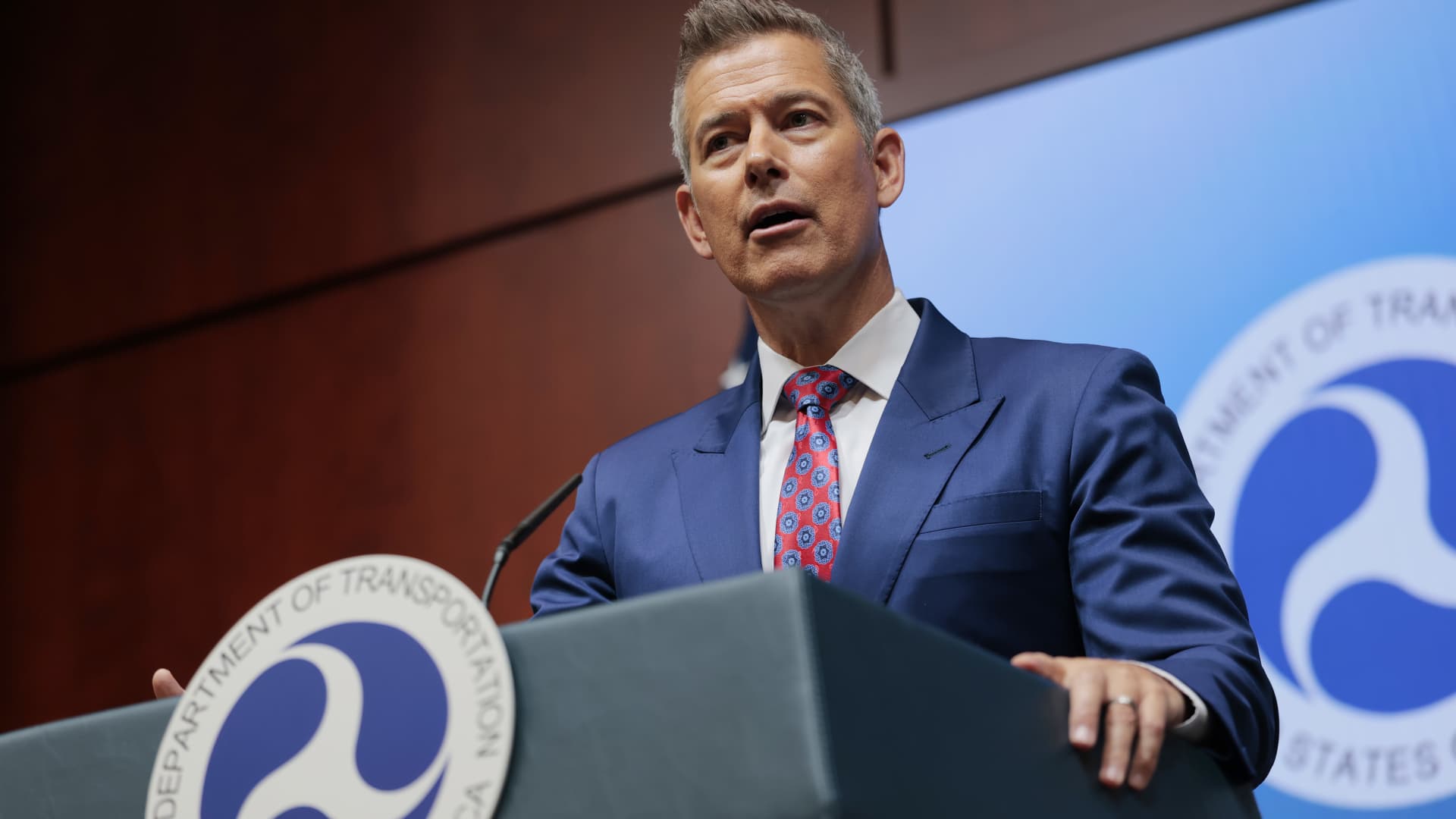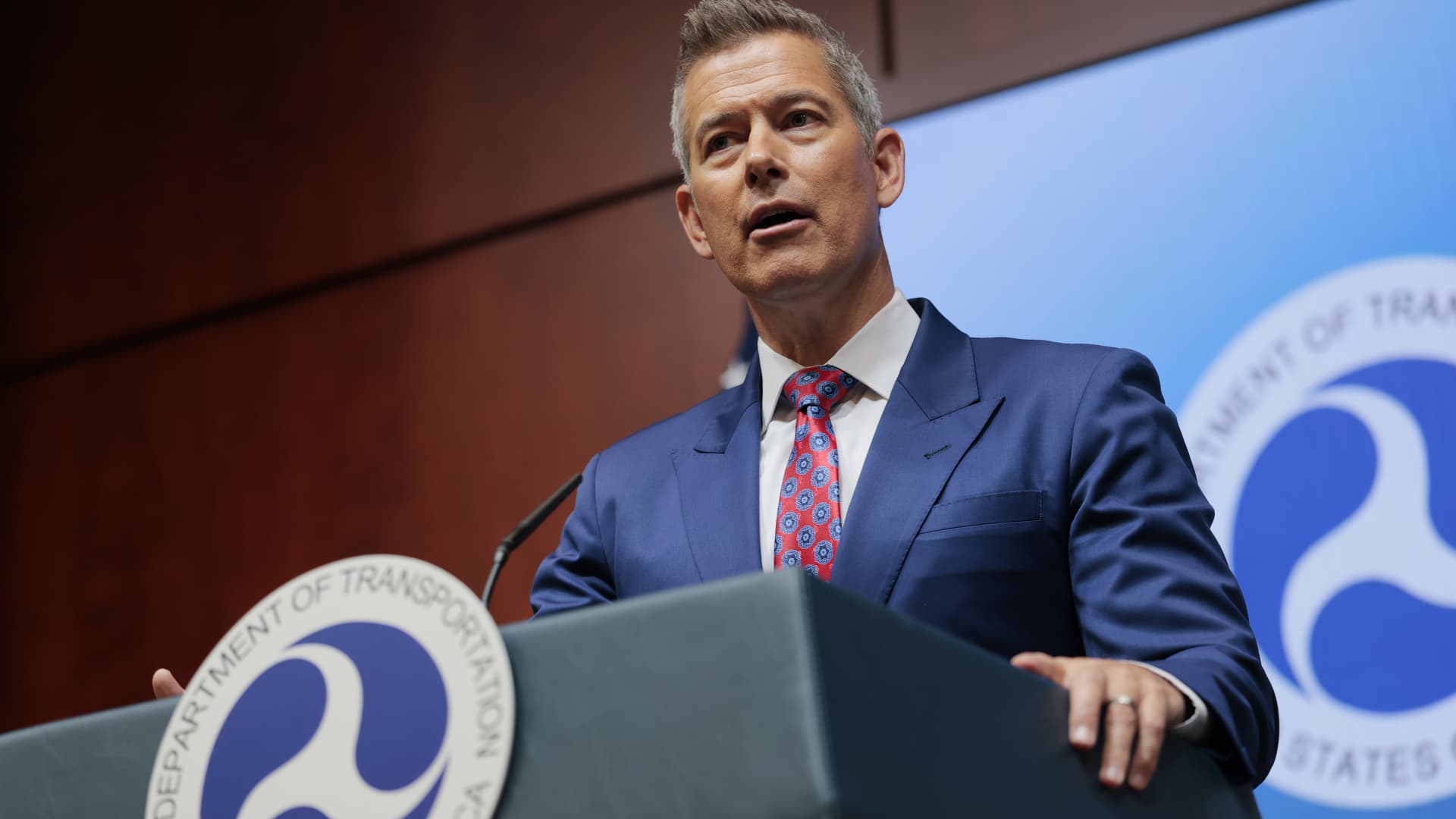The political landscape is often marked by unexpected turns, and President Donald Trump’s decision to appoint Transportation Secretary Sean Duffy as the interim administrator of NASA is a prime example. This move, announced on a Wednesday, sparked considerable discussion and raised questions about the administration’s priorities for the space agency. While Duffy’s background lies in transportation and infrastructure, Trump lauded him as a “fantastic leader” capable of temporarily steering NASA. This report delves into the context surrounding Duffy’s appointment, examining his qualifications, the potential implications for NASA, and the broader political dynamics at play.
A Surprise Nomination: Duffy’s Background and Expertise
Sean Duffy’s career has primarily revolved around transportation and infrastructure. As Secretary of Transportation, he was instrumental in implementing President Trump’s agenda, focusing on improving the nation’s transportation systems, including air traffic control. His efforts in this domain were evidently appreciated by Trump, who highlighted Duffy’s “tremendous” work in this area. Duffy’s confirmation as Transportation Secretary underscored his ability to navigate the complex political landscape and gain bipartisan support.
However, Duffy’s background lacks direct experience in space exploration or scientific research, the traditional domains of NASA leadership. This absence of a specific space-related background raises concerns about his ability to effectively manage the agency’s complex scientific and technological endeavors. While leadership skills are transferable, the nuances of leading a highly specialized agency like NASA require a specific understanding of its mission and challenges.
Duffy’s appointment also highlights the broader trend of political appointees being placed in roles that may not align perfectly with their professional backgrounds. This practice has become more common in recent years, as administrations seek to reward loyalty and ensure alignment with their policy agendas. However, it also raises questions about the potential consequences of such appointments, particularly in agencies that require specialized knowledge and expertise.
A Temporary Solution: The Context of Interim Leadership
The appointment of Duffy as interim administrator suggests a temporary solution to a leadership gap at NASA. The withdrawal of Trump’s original nominee for the post likely created an immediate need for someone to steer the agency. Duffy’s appointment could be viewed as a pragmatic decision to ensure continuity and stability during a period of transition.
However, an interim appointment can also create uncertainty within the agency. NASA employees and stakeholders may be hesitant to fully commit to new initiatives or strategic directions under an interim leader, potentially slowing down progress on key projects. The effectiveness of Duffy’s tenure will depend on his ability to quickly grasp NASA’s priorities and build trust with the agency’s workforce.
Moreover, the use of interim appointments can sometimes signal a lack of long-term planning or a reluctance to commit to a permanent leader. This can create challenges for the agency, as it may struggle to develop and implement a coherent long-term strategy. In the case of NASA, which is responsible for some of the most ambitious and complex scientific endeavors in the world, having a stable and visionary leader is crucial.
Implications for NASA: Continuity vs. New Directions
Duffy’s leadership at NASA could have several implications for the agency’s direction and priorities. Given his background in transportation, he may bring a fresh perspective to NASA’s technology development and infrastructure projects. His experience in managing large-scale transportation initiatives could be valuable in overseeing NASA’s ambitious space exploration programs.
On the other hand, Duffy’s lack of a space-related background could lead to a greater reliance on NASA’s existing leadership team for technical guidance. This could result in a period of continuity, with the agency largely maintaining its current course. However, it also raises the question of whether Duffy will be able to effectively champion NASA’s interests within the administration and advocate for the resources needed to achieve its goals.
Furthermore, the appointment raises questions about the Trump administration’s overall vision for NASA. While Trump expressed enthusiasm for space exploration, his administration’s policies have sometimes been unclear or contradictory. Duffy’s appointment could signal a shift in priorities or a renewed focus on specific areas within NASA’s portfolio.
For example, Duffy’s background in transportation could lead to a greater emphasis on NASA’s aeronautics research and development programs. This could be beneficial, as aeronautics is a critical component of NASA’s mission and has the potential to drive innovation and economic growth. However, it could also come at the expense of other important areas, such as Earth science or planetary exploration.
Political Ramifications: Trump’s Decision-Making and Priorities
Trump’s decision to appoint Duffy as interim NASA administrator reflects his unconventional approach to governance and his willingness to deviate from traditional norms. The appointment underscores Trump’s emphasis on loyalty and his tendency to reward individuals who have demonstrated their commitment to his agenda.
The move also highlights the political considerations that often influence appointments to key government positions. By tapping a member of his cabinet to lead NASA, Trump may have been seeking to consolidate control over the agency and ensure alignment with his administration’s broader policy objectives.
However, the appointment could also be seen as a sign of the challenges Trump faced in attracting qualified candidates to serve in his administration. The withdrawal of the original nominee for NASA administrator suggests that finding individuals willing to take on high-profile positions in the Trump administration was not always easy.
Moreover, the appointment of Duffy as interim administrator could be interpreted as a way to fill a leadership vacuum without committing to a permanent solution. This approach allows the administration to maintain flexibility and avoid making a long-term commitment to a particular vision or direction for the agency.
Potential Impacts on Space Policy and the Future of NASA
Sean Duffy’s brief tenure as interim NASA administrator did not produce any major policy overhauls or dramatic shifts in direction for the space agency. His role appeared primarily focused on maintaining continuity and stability during a period of leadership transition.
However, his appointment did spark a broader discussion about the qualifications and priorities of NASA leadership. It raised questions about the importance of technical expertise versus managerial skills in leading a complex scientific agency. It also highlighted the political considerations that often influence decisions about NASA’s leadership and direction.
Ultimately, the impact of Duffy’s tenure on space policy was limited. His appointment served as a temporary measure to address a specific leadership gap. The longer-term direction of NASA would depend on the vision and priorities of future administrators and the political support they receive from the White House and Congress.
Looking ahead, the future of NASA will depend on the ability of its leaders to navigate the complex political landscape and advocate for the agency’s mission. It will also require a commitment to investing in the scientific and technological capabilities needed to achieve ambitious goals in space exploration.
Conclusion: An Unconventional Choice in a Dynamic Landscape
The appointment of Sean Duffy as interim NASA administrator was an unexpected move that reflected President Trump’s unconventional approach to governance. While Duffy’s background in transportation lacked direct relevance to space exploration, his leadership skills and commitment to Trump’s agenda made him a suitable candidate to temporarily steer the agency.
Duffy’s tenure at NASA served as a period of transition, with his primary focus on maintaining continuity and stability. While his appointment did not lead to any major policy changes, it sparked important discussions about the qualifications and priorities of NASA leadership.
The future of NASA will depend on the vision and leadership of those who follow Duffy. As the agency continues to pursue ambitious goals in space exploration, it will be crucial to have leaders who can effectively advocate for its mission, inspire its workforce, and navigate the complex political landscape. Duffy’s brief stint as interim administrator serves as a reminder of the ever-changing dynamics that shape the direction of one of the world’s leading space agencies.












